“Invasive” is a name for plant species that are not native to Pennsylvania, grow aggressively, spread quickly, and displace native vegetation.
Invasive plants are undesirable because they are difficult and costly to control; and can dominate entire habitats, making them environmentally destructive in certain situations.
Some invasive plants came to the commonwealth by accident, and others were brought here and planted in gardens or landscaping.
Invasive plants, even when grown in a cultivated yard, can spread, escape into native ecosystems, and cause landscape maintenance weeding problems for years to come.
Emerging Invasive Concerns
Pennsylvania has learned to be on the lookout for invasive plant species that are up-and-coming threats. The following plants have been identified as emerging invasive concerns to the commonwealth.
These plants species were ranked for their “invasiveness” using information available from invasive species databases, scientific literature, expert opinion, and observation by the Pennsylvania Natural Heritage Program through a Wild Resource Conservation Program-funded project.
Hardy Kiwi Vine
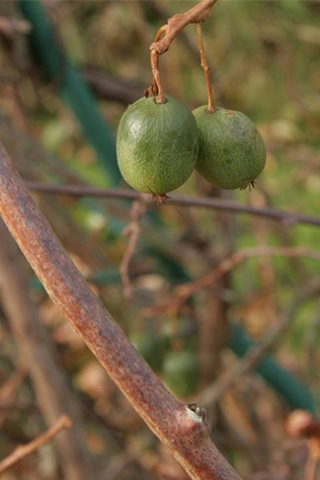
Sten Porse, Bugwood.org; CC BY-NC 3.0
Hardy kiwi vine (Actinidia arguta), also called tara vine, is a northeast Asian native used for landscaping.
This relative of the kiwi fruit was introduced from horticultural cuttings in 1886. It forms dense mats of twining vines that invades forests, shrublands, and meadows.
The vines can overwhelm other plants, including trees. Trunks and branches can break under their weight, especially in ice and snow.
Hardy kiwi vine can tolerate very cold weather (-25⁰ F or lower) and can grow up to 20-feet each year. This invasive plant has been reported in Philadelphia County.
Asiatic Sand Sedge
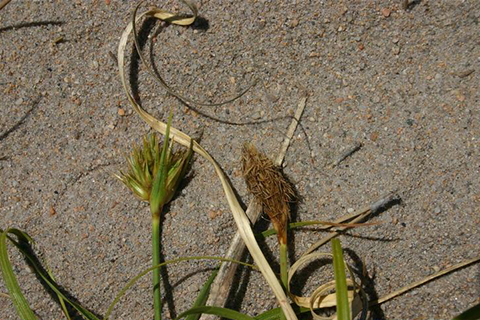
Leslie J. Mehrhoff, University of Connecticut, Bugwood.org; CC BY 3.0
Asiatic sand sedge (Carex kobomugi) is native to coastal northeast Asia, first noted on the U.S. west coast in 1907, and on the east coast in 1929.
It was used to stabilize east coast sand dunes until the 1980s. It out-competes natives, but leaves dunes more vulnerable to erosion.
In Pennsylvania, this threat is specific to Presque Isle State Park and the Lake Erie shoreline, but it is found along the Atlantic seaboard.
Policeman’s Helmet
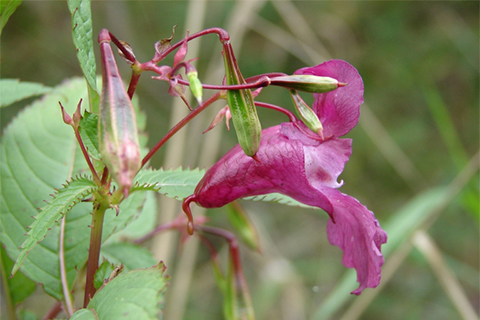
Barbara Tokarska-Guzik, University of Silesia, Bugwood.org; CC BY 3.0
Policeman’s helmet (Impatiens glandulifera) out-competes natives by creating dense thickets in riparian areas, moist forests, and wet meadows, and can lead to soil erosion.
It draws native pollinators away from nearby native plants and leads to overall reduction in biodiversity and decline in ecological value.
This ornamental from the Himalayas is prone to escaping and spreads easily due to its exploding seed pods.
It was introduced in North America in the early 1800s and is now found in Canada, New England, and some Midwest states.
A better alternative to plant on your property is the native spotted jewelweed (Impatiens capensis) or pale jewelweed (Impatiens pallida).
Chinese Privet
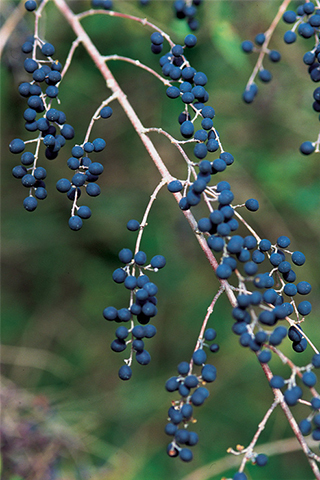
James H. Miller, USDA Forest Service, Bugwood.org; CC BY 3.0
Chinese privet (Ligustrum sinense) is often found on the edges of swamps, riparian areas, and woodlands.
An ornamental introduction from southeast Asia in the 1850s, this shrub has naturalized and been spreading since the 1950s.
This shrub is a prolific producer of berries, which are eaten by birds and other wildlife, then scattered far and wide. Wildlife eat the berries; however, they have little nutritional value.
Chinese privet forms dense stands, displacing native shrubs and shading the understory. It has been found in the southern U.S., but also in neighboring New York and New Jersey, as well as other New England states.
Its range is expanding northward. Better choices to plant in your backyard include native juneberries, blueberries, or hollies.
Water Primrose
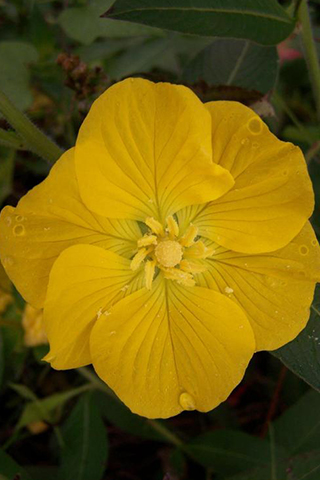
Karan A. Rawlins, University of Georgia, Bugwood.org; CC BY-NC 3.0
Water primrose (Ludwigia grandiflora ssp. hexapetala) is another species whose range is expanding north.
This rooted aquatic is native to South and Central America, and was first introduced into Tennessee and Kentucky in 1968 and 1988, respectively.
Water primrose grows by stolons, or runners, and can spread on land and water forming a floating mass that chokes out native vegetation, clogs waterways, and hampers outdoor recreation, such as boating, swimming, and fishing.
Water primrose is found in the southern U.S., but has been reported in Berks County.
Avoid planting this in your water feature or pond.
How You Can Help Stop the Spread
Be on the lookout for these invasive plants! Learning to identify invasive plants is the first step in understanding and combatting the problem.
They can be difficult to control, but by taking some steps at home and in the wild, you can help limit the spread of these troublesome plants.
Learn more about these and other emerging invasive plants at the PAiMapInvasives website.
Learn more about invasive plants in Pennsylvania and how you can help control their spread at DCNR’s website.